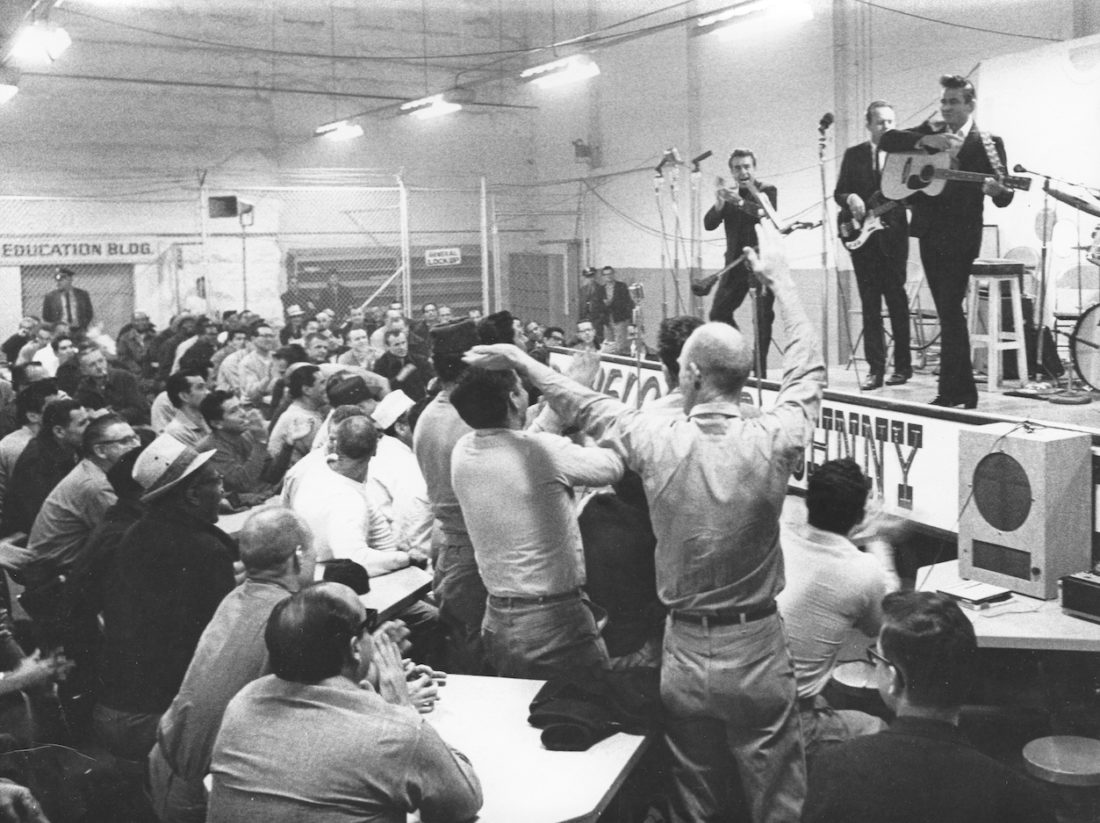Contrary to urban legend, Johnny Cash never spent any time in prison. As an inmate, that is. In 1951, while serving in the Air Force in Germany, Cash watched Inside the Walls of Folsom Prison, a film that depicted brutal conditions endured by inmates at the California institution. The scenes of tortuous violence affected Cash deeply and in 1957 he began performing in prisons, including a 1959 show at San Quentin which found inmate Merle Haggard in the front row.
But it was his performance at another California prison, Folsom State, that has become one of music’s most iconic moments. In the late 60s, Cash had fallen out of favor with the Nashville music industry, his career struggling as he fought drug addiction. He got sober in late 1967 and arrived at Folsom Prison on January 13, 1968—fifty years ago—to record a live album. “I was about as relaxed as a bug in a Roach Motel, being still new to the business of getting up on stage in front of people without a bloodstream full of drugs,” Cash wrote in his 1997 autobiography. “But once we were into it, that was one good show.”
Indeed, it was. Cash performed two shows that day, one in the morning, the other early in the afternoon. After opening acts Carl Perkins and the Statler Brothers each played a song, Cash stepped to the mike and with that deep voice uttered, “Hello, I’m Johnny Cash,” then launched into “Folsom Prison Blues,” a song that was actually written in 1953 and had already given Cash a hit in 1955.
The version Cash recorded that day, which appears on his 1968 album At Folsom Prison (Live), went to number one on the country singles charts and helped revitalize his career. When Cash sang the words, “I shot a man in Reno, just to watch him die,” the inmates can be heard cheering wildly. In reality, those cheers were added post-recording by producer Bob Johnston because the inmates were too afraid to show emotion lest they suffer reprisals by the guards.
Whether it was nerves or a sense of dread, “Folsom Prison Blues,” the album opener, starts with a steady beat, but as the song goes on, the tempo speeds up and by the end Cash sounds as scared and as desperate as the inmates. From there, he begins to relax and loosen up, developing an easy rapport with the inmates and soon-to-be wife June Carter, who joins him for the scintillating duet, “Jackson.”
Cash would go on to release another album recorded from a prison show, 1969’s At San Quentin, and he became a strong advocate for prison reform and the rights of inmates, even testifying before Congress in 1972.








